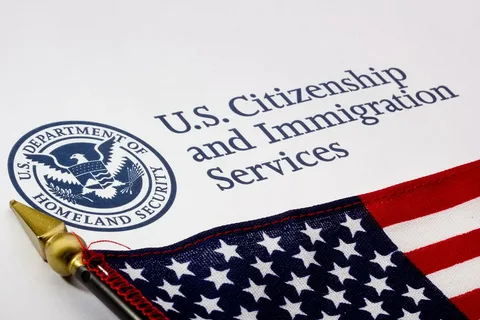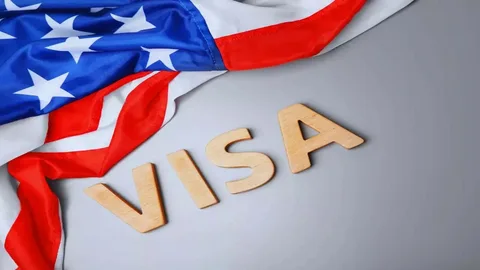The United States government has announced plans to reintroduce the visa bond pilot program, a policy that may require certain short-term travelers to pay a refundable bond of up to $15,000 USD before being issued a visa. This move is aimed at curbing visa overstays and ensuring compliance with U.S. immigration laws.
The policy, which first appeared briefly in 2020 under the Trump administration, is now returning in 2025 with a broader scope and revised criteria. It’s already generating conversation in the global travel and immigration space—particularly among citizens of countries classified as “high-risk” based on historical visa overstay records.

What Is the Visa Bond?
A visa bond is a temporary financial deposit required from certain travelers applying for nonimmigrant U.S. visas—primarily B1 (business) and B2 (tourism) categories. If selected under this policy, the applicant must pay a bond ranging from $5,000 to $15,000 before their visa can be approved.
The bond serves as a guarantee of compliance with U.S. visa conditions. If the traveler adheres to the terms—especially by leaving the United States on or before their visa expiration—they may apply for a full refund of the bond. However, failure to comply, including overstaying, may result in forfeiture of the bond.
Why Is the Policy Being Reintroduced?
The primary reason behind the reinstatement of the visa bond is to address persistent challenges with visa overstays. Every year, thousands of travelers enter the U.S. on temporary visas and fail to exit the country within the permitted timeframe. This not only creates legal and administrative burdens for the U.S. immigration system, but also undermines the integrity of nonimmigrant visa programs.
According to the U.S. Department of Homeland Security (DHS), some countries have significantly higher overstay rates than others. The visa bond policy is designed to encourage travelers from such countries to comply with visa terms by introducing a financial incentive.
Which Countries Will Be Affected?
In the original 2020 pilot program, around 20 countries were listed based on visa overstay statistics from DHS reports. It’s important to note that the 2020 version was a limited six-month trial and not all travelers from these countries were asked to pay the bond. It was applied at the discretion of consular officers.
Now, in 2025, the policy is being revised and reintroduced with expectations of a wider and more structured implementation. While the official list for the new pilot has not been fully released, reports suggest that several countries—particularly those with high overstay rates or weak screening systems—may be affected.
Countries with citizenship-by-investment programs that lack strict residency requirements are also being reviewed under the new criteria.
The U.S. State Department has stated that the final list of countries will be published at least 15 days before the policy takes effect on August 20, 2025.
How the Process Will Work
For travelers applying for U.S. visas from designated high-risk countries, the process will proceed as follows:
- Standard visa application: Applicants begin by completing the usual B1/B2 visa application, including submitting forms and attending an interview.
- Bond requirement notification: If selected, the consular officer will inform the applicant that they are required to pay a visa bond before the visa can be issued.
- Payment of the bond: The applicant must pay the specified bond amount (typically $5,000, $10,000, or $15,000) to a designated U.S. government account.
- Travel to the U.S.: Once the bond is paid and the visa is approved, the applicant may travel to the U.S. under the standard visa terms.
- Bond refund process: After returning to their home country and meeting all conditions of the visa, the traveler can request a refund of the bond.
Failure to comply with visa terms especially in cases of overstaying or violating the conditions of stay, will result in loss of the bond amount.
What This Means for Travelers
The reinstatement of the visa bond program introduces a significant financial barrier for some applicants. Travelers from affected countries may need to plan well in advance, not just in terms of documentation and visa interview preparation, but also in terms of securing the required funds.
For many, the bond amount—equivalent to several months’ salary—could make U.S. travel financially inaccessible. It also introduces greater scrutiny into the visa application process, especially for those with no previous travel history, no strong ties to their home country, or unclear travel intentions.
It is also possible that this policy will influence travel decisions, pushing some individuals to explore alternative destinations with more lenient visa policies.
Final Thoughts
The U.S. visa bond policy is a clear indication of tightening immigration measures and a renewed focus on ensuring compliance with visa regulations. While the policy aims to reduce overstays and enhance border integrity, it also raises questions about access, fairness, and affordability for travelers from lower-income or politically unstable countries.
Travelers who may be affected are advised to monitor announcements from the U.S. State Department and prepare their applications with greater attention to detail. Understanding the requirements, being transparent in visa interviews, and demonstrating strong ties to one’s home country can go a long way in reducing the chances of being asked to post a bond.
As global mobility becomes more complex, information and preparation remain key. Whether this policy will be fully adopted beyond the pilot phase depends on how effective it proves over the coming year.


